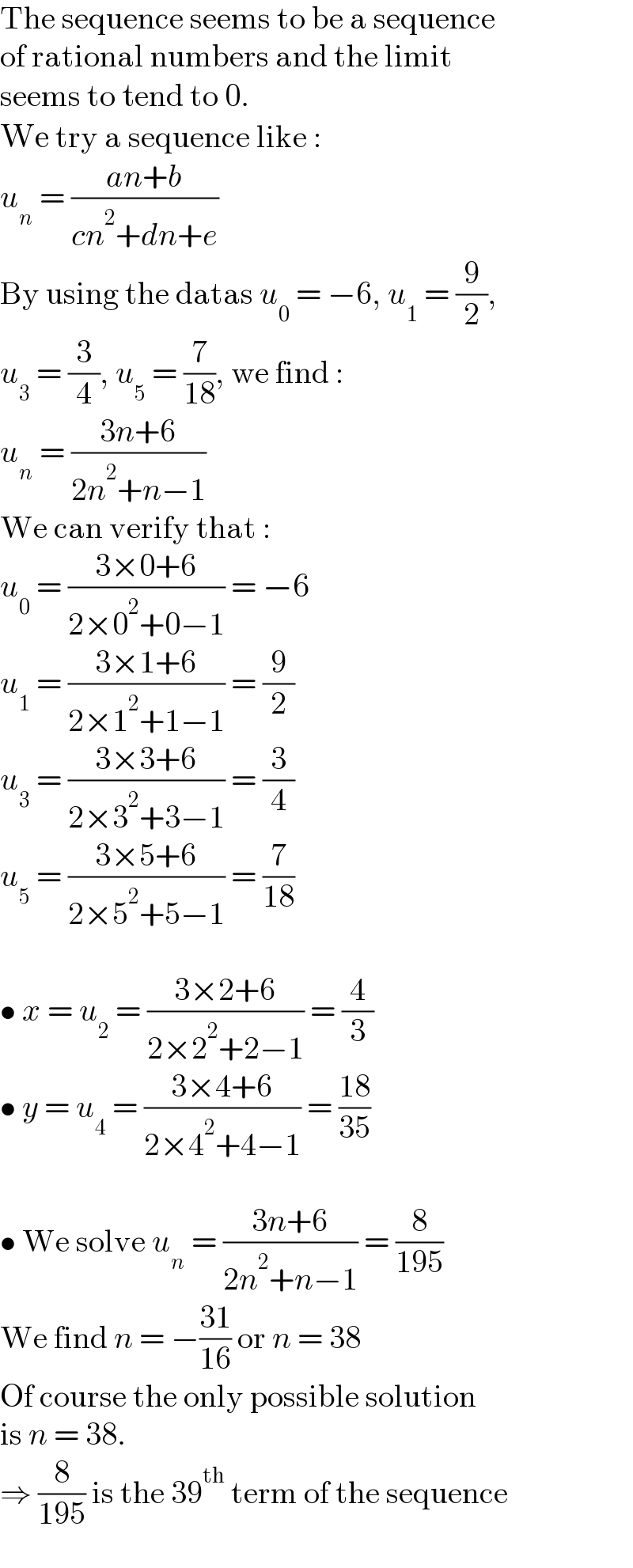
Question and Answers Forum
Question Number 148541 by gloriousman last updated on 29/Jul/21

Answered by Olaf_Thorendsen last updated on 29/Jul/21

| ||
Question and Answers Forum | ||
Question Number 148541 by gloriousman last updated on 29/Jul/21 | ||
 | ||
Answered by Olaf_Thorendsen last updated on 29/Jul/21 | ||
 | ||
| ||